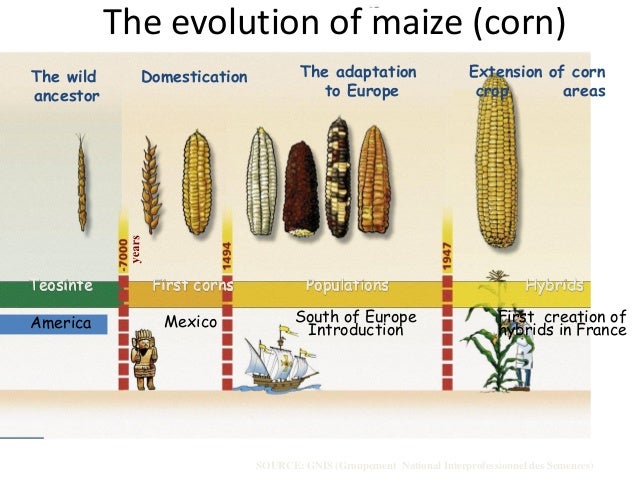Image source: http://farm8.static.flickr.com/7094/26961687512_5a6d254195.jpg
Not only is the modern yellow banana sweet to taste, but it is easy to grow and keeps well for extended periods at a relatively low cost. The banana industry began from huge plantations established in the Bahamas and Central and South America. The banana tree cultivation is inexpensive because of the ability of the mother plant to constantly divide into fast growing new trees. The labor cost is cheap for growing bananas in these third world countries, and shipping costs of barge transports is inexpensive to America and European markets.
Banana trees are viewed as tropical plants by most observers, however, in recent years the plants have survived in States further and further North. The lush green leaves of the banana tree are frozen in Winter, and in some cases the entire stalk of the tree is frozen, but the underground shoots will arise vigorously in the Spring to produce new banana trees. In some cases, a banana sprout may grow into a mature tree during a 6 month period to produce an amazing tree; twenty feet tall and one foot in diameter, weighing several hundred pounds. This tree can also produce up to 15 daughter, offset banana plants, each capable of growing into mature trees the first season. Even though some banana trees exhibit striking cold hardy qualities, most cultivars are tropical in nature, and will not survive freezing winter temperatures, however, some banana cultivars are very resilient and can surge from a Winter deep freeze to grow into a mature banana tree with giant clusters of bananas, delicious to the taste. Such a banana was discovered growing in Wichita Falls, TX, that survived the fabled freeze of 1983 84 of minus 16 degrees F. to regrow and produce a crop of bananas the following year. This extraordinary cold hardy banana was named 'Texas Star' Banana and can be purchased to buy from certain Internet mail order sources. Many of the cold hardy fruiting banana plants appear to have originated growing on the banks of a river in an area of Venezuela and Brazil, where the Orinoco River flows. These banana cultivars are collectively known as "Orinoco Bananas."
Another remarkable quality of the modern edible bananas is the seedless quality, however to be completely accurate, these bananas are not seedless, but they contain small black spots within the banana tissues that are edible and don't interfere with dentures and are tiny sterile seed. The wild banana cultivars are numerous, approaching 1000 in number, and many have colorful leaves that make certain cultivars highly desirable as ornamental landscape plants. The seed of the wild type banana plants will germinate to grow into new banana trees. One particular cultivar of the ornamental banana forms a large pseudo-trunk that appears similar to the trunk of a deleafed palm tree. This banana tree is called an "Ensete" banana, "Ensete ventricosiom 'Maurelii'. The leaves of this banana tree are very large with a bright, purple-red coloration that develops in the fall. The seed of a wild banana are noxious and the wild banana is unsuitable to eat as a food item only to be grown as a dense privacy block or an ornamental landscape tree.
The growing point of a banana plant is in the center of the stalk, and the outer growth rings of the banana stalk are the oldest. In midsummer, if a banana stalk is decapitated, a gardener can see the amazing rapid growth rate for himself. After observing the decapitated banana tree for 24 hours, he can see a one foot shoot growing from the center, which rapidly will develop into new leaves. This banana decapitation often forces the banana tree to produce numerous daughter offset banana plants, or in some cases, the banana tree will be shocked into a fruiting progression that can result in fast ripening bananas, sweet to the taste.
If an orchard of banana trees is planted 4 feet apart in every direction in late Spring, the banana trees rapidly begin growing after a week of transplanting, and the roots spread aggressively outward from the mother banana plant, growing in lines like the alignment of spokes on a bicycle wheel. After a month or two of growing, the dense blocking shade of the banana leaves and the hostile dessication of moisture by the banana roots will eliminate any competitive growing of weeds or germinating seeds. The growth of the banana trees can be accelerated in several ways. The banana tree must be planted in full sun to generate the maximum photosynthetic component, chlorophyll. The most important growth promoter in banana trees is an abundant flooding of water beginning in late May and continuing until early Fall. During June and July, a banana tree can grow one foot in height every two days if daily, multiple applications of water are made. Fertilization is extremely important to the heavy feeding banana trees. For heavy applications of nitrogen, ammonium nitrate can be spread on the ground and watered-in each week. Potassium is very beneficial to banana trees by scattering 40% potash underneath the trees every two weeks. If the above fertilizer concentrates are not available, heavy applications of 10-10-10 is appropriate once each week. Banana plants appear to respond also to applications of magnesium sulfate 'Epsom Salts.' Most soils are excellent for growing banana trees, and the advice of some companies selling bananas that a gardener should plant banana trees in well drained soil is not true. Banana trees often grow on the edge of farm ponds, even spreading into the water sometimes, and along river banks.
Banana plants appear to be immune to most diseases and insect pests, however, during tobacco season in August, the tobacco worms seem to migrate after tobacco harvest toward any new leaf food opportunity, but the tobacco leaf worm is easily controlled by a light spraying of Malathion. Black nematodes can buildup in soils over the years to enter the roots of banana trees, but the nematode can be controlled by applications of Nemagon.
When a banana tree begins to fruit, a small sword shaped (rogue) leaf appears at the top of the tree, followed by a unique flower. The banana flowers are dropped each day during the fruit development, and small bananas are initiated in groups called "hands." A mature bunch of bananas can contain as many as 12 hands of bananas that can weigh 80 pounds. To fully ripen, the bunch of bananas is cut from the tree and placed commercially into a dark room and exposed to ethylene gas, a ripening agent that is given off from the fruit as it ripens.
For a banana plant to mature properly in one season, it is better to plant large field grown banana trees rather than tiny 6 inch pot banana plants that were grown through tissue culture. There is some debate that tissue grown banana trees have 'run out', a condition unfortunately prevalent in horticultural crops reproduced vegetatively such as strawberry, raspberry, and blackberry plants and many others. The commercial demand for banana trees has been responsible for the rapid growth of tissue culture banana reproduction for the mail order plant business, that prefers selling small banana plants, easily boxed and avoiding the high shipping costs of field grown banana trees.
Cold hardy banana trees have become a target by Northern gardeners to experiment with. New cultivars of cold hardy banana field grown trees can be easily grown in the northern states as an annual, and if properly stored during winter the banana tree will resurge in the Spring. Banana trees show the same cold hardy toleration in northern states as the fig tree. Plant banana trees for a tropical experience of gardening.





